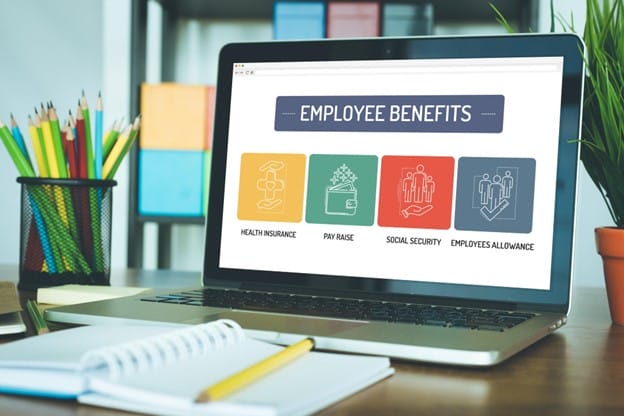Retirement planning looks a little different for everyone. Someone who is in their twenties or thirties and working on paying off their student loans has different retirement planning needs compared to someone who is 58 and is considering retirement in the next several years. Many employers are already aware of these age-based differences in retirement planning needs. However, age is only one factor among the many that influence an individual’s preferences, concerns, and goals. As workforces increasingly diversify, those offering retirement plans may need to consider features and benefits that extend beyond age differences. For instance, gender and race can impact the ability to accumulate retirement wealth. Creating retirement plans with those challenges in mind and providing tools to help employees overcome them on their own terms, can be a huge benefit for a diversified workforce, and Wisterm may be able to help with that process.
An Increasingly Diversified Workforce
Diversification in the workforce is increasing, partly due to a decades-long trend toward increasing numbers of women working outside the home, and partly in tandem with shifting demographics in the population at large. In fact, the American Association of University Women indicates that, in 2020, the total U.S. population under the age of 18 became “majority minority”—meaning that the number of ethnic minority children exceeded the number of white children. The Latino population, in particular, is growing rapidly in the United States and is expected to make up about 20% of the workforce by 2028. In 2019, most new hires were people of color for the first time in American history. With an increase in diversification in the workforce also comes concerns about wealth distribution and pay gaps.
The Racial Wealth Gap
According to the Center for American Progress, Black households statistically have a lower wealth accumulation compared to their white counterparts. Further, USA Facts reports that whites had $124.5 trillion in assets in the third quarter of 2022. By comparison, Black households had under $8 trillion in assets, Hispanic households had $5.5 trillion, and all other races combined had about $5.7 trillion.
White households have a 50% greater net worth compared to the next most well-off group. When it comes to retirement, white households have about $271,265 on average in retirement accounts in 2022. Other races have at least $100,000 fewer assets in retirement accounts.
The Gender Wealth Gap
Many people have heard that women still face a pay gap today. A fact that receives comparatively less attention in public discourse is that even where there is no pay gap, there may still be a wealth gap. According to the Federal Reserve Bank of St. Louis, families who have a woman as their head of household have about 55% of the wealth compared to families headed by men.
Financial Instability and Work Performance
A lower wealth accumulation can result in financial insecurity and instability compared to more affluent individuals and households, with ripple effects that can affect how employees perform at work. The Society for Human Resource Management reports that saving for retirement is one of the top stressors for workers, and when workers are stressed, they are up to four times more likely to suffer from symptoms like headache, fatigue, depression, and anxiety. They are also twice as likely to have poor overall health, which generally leads to increased time away from work.
Creating a New Retirement Plan To Meet the Needs of a Diversified Workforce
Retirement planning that focuses on serving a diverse workforce involves examining their challenges and providing resources to address them. Below are a few suggestions and tips on implementing a retirement plan that assists all your workers.
Personalized Retirement Benefits
New strategies for retirement planning allow for increased levels of personalization. Instead of a single “standard” plan, employers can offer a wider range of options from which employees can select the version that best meets their specific needs. While personalization requires some initial investigation into what an organization’s employees want, this fact-finding mission can yield helpful information. Showing interest in learning about and finding ways to meet employees’ retirement planning needs has the added benefit of improving employee retention and increasing company morale by also allowing employees to feel heard and valued. Employees generally appreciate managerial efforts when they know their retirement plans and other benefits are tailored to what they actually need. A holistic approach to retirement planning programs can be beneficial to employers as well.
Communication and Access to Information
Workers are less likely to participate in a retirement plan if they do not understand the plan or the benefits it offers. Especially in cases for which a new job represents an individual’s first access to an employment-based retirement plan. New employees may understand what the retirement plan is but need to get additional information about initial setup, investment options, and matching benefits.
Communication with workers about the company’s retirement planning program is critical. Employers might want to have informational sessions with employees so the latter can ask questions and get more information about investment options. Online resources and access to financial planners can be helpful for those who have never invested before. Even something as simple as email communications and reminders can help get information into the hands of the employees who need it.
General Financial Wellness Programs
Retirement planning is great, but it might not be a priority for every worker. Instead, some workers may be more focused on paying off debt or trying to create a budget long before they worry about retirement. One benefit that employers may want to consider offering is a general financial wellness program. This program can certainly have retirement planning components, but employers might also want to expand the program to address other areas of financial concern.
Financial planning, and especially planning for retirement, can be very intimidating for many workers. General financial wellness information and resources can help employees gain knowledge and confidence when it comes to their money, which can lead to a more focused and productive workforce overall.
Consider Diversity When Setting Up Investment Options
For some employees, diversity in their investments aligns with their personal values. Having an option for diversity, equity, and inclusion (DEI) investments can show employees that you care about their values and investment goals.
Creating Tailored Retirement Planning for Your Diverse Workforce
An external consultant may be able to help your company create a retirement plan that works for your diverse workforce. Whether the goal is more personalization or a wider variety of investment options, a consultation with an experienced retirement services specialist can help. Wisterm helps employers create plans that empower workers to take control of their retirement planning, which also helps employers create a happier and more confident workforce.




